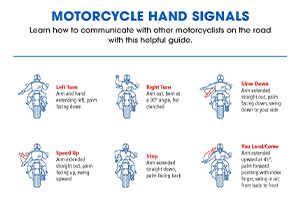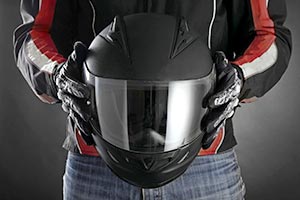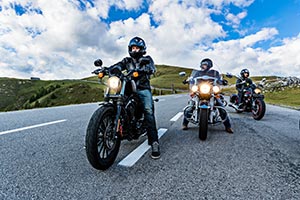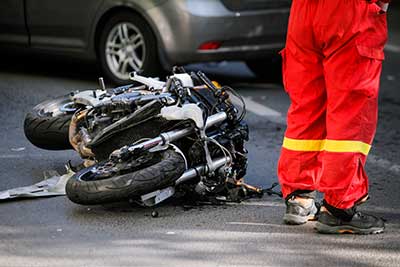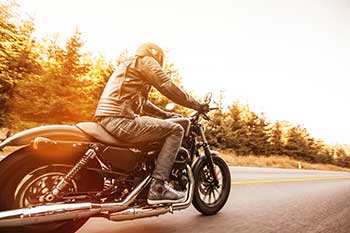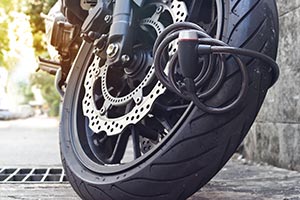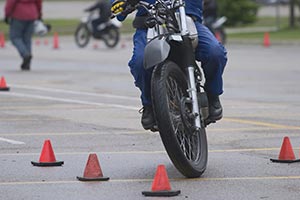Motorcycle Safety Tips for AARP Members
Safely enjoy the freedom of the open road, and your AARP® Motorcycle Insurance Program from Foremost® policy. As a motorcyclist, you know that some risks come along with the fun and excitement of riding. Fortunately, following these simple safety tips can help reduce the likelihood of danger and help keep you safe while you ride.
10 Essential Motorcycle Safety Tips for Riders

Know the Law
Licensing and safety gear laws, such as wearing helmets, differ across the country. Check with the Department of Motor Vehicles where you'll be riding to find out what is required.

Plan Ahead
Examine current road conditions, and postpone riding if they are unfavorable. Take extra precautions on wet pavement, which can be slick. It can be helpful to bring your owner's manual and tool kit with you on the road.

Gear Up
For optimum protection wear a helmet, eye protection, a sturdy jacket, long/thick pants, boots and gloves.

Stand Out
Brightly colored clothes and helmet can help you stand out and make it easier for other drivers to see you. While you ride, keep your headlights on to avoid other vehicles' blind spots, drive defensively and prepare to use your horn.

Distance Yourself
Leave enough space between you and other vehicles that you have time to react and protect your safe space. When turning, start on the outside of the curve (within your lane) to give yourself additional visibility ahead and to increase your buffer zone.

Position Your Bike
When riding, it is recommended to make the left wheel track of a 4-wheeled vehicle your main lane position. Then, when following another vehicle or coming to a stop, moving to the right side of the lane helps to make yourself more visible and create a space for you to exit if you need to.

Ride Defensively
Remain aware of what other drivers are doing. Use the "SEE" method recommended by the Motorcycle Safety Foundation — Search for changing road conditions, Evaluate the situation and Execute defensive driving techniques to avoid collisions. Be wary of intersections and cars waiting to turn left across your path in case they don't see you.

Stay Sharp
Alcohol, certain medications and fatigue all impair your ability to make sound judgments. Ride only when your senses are sharp, and make regular rest stops on long trips. And remember, NEVER drink and drive.

Prepare Your Passenger
Make sure your passenger wears the right safety gear and understands proper riding techniques.

Learn More
Consider taking a beginner or experienced motorcycle safety course from a training center recognized by the Motorcycle Safety Foundation. You may even qualify for a discount on your Foremost policy if you have completed a safety course in the last three years.
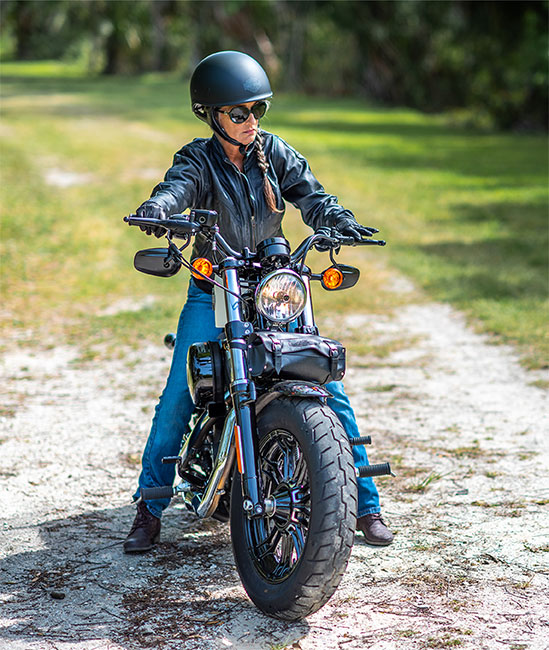
Safe Rider Checklist
Answer these questions before you ride:
- What are the motorcycle riding laws where you plan to ride?
- Do you and your bike have the necessary licenses?
- Are you properly insured through the AARP Motorcycle Insurance Program from Foremost?
- What are the road and weather conditions?
- Have you read your motorcycle owner's manual?
- Are you and your passenger wearing protective gear — brightly colored helmet, eye protection, sturdy jacket, long pants, boots and gloves?
- Have you inspected your bike to make sure it's running properly?
- Does your passenger know proper riding techniques?
- Have you practiced riding in a safe, low-traffic area?
- Have you taken a motorcycle-riding course?
- Are your senses sharp and are you alcohol-free?
- Is your headlight on to avoid other vehicle's blind spots?
